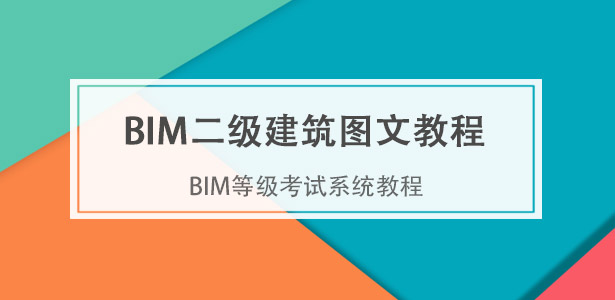
下載app免費領取會員


版權說明:本文來源BIM譯站微信公眾號,轉載已取得授權
公眾號名稱:BIM譯站
公眾號賬號:BIM2018130

譯
文
2.5.3 作為BIM環境
BIM時代伊始,人們認為單獨的一個應用程序就能滿足所有層面上的需求:作為工具、作為平臺以及作為環境。隨著人們理解了BIM項目的體量和支持應用程序的系統,這種理想主義便慢慢地減弱了。用于全局支持高級BIM項目的一個重要能力是在一個多重平臺和多重表現的環境中支持工作。一個BIM環境要有生成和儲存構件實例以用于不同工具和平臺并能高效管理數據的能力,包括在構件級別的變更管理。第三章的第3.5節著重討論了這方面。這一點可通過任何時候修改項目而發生更新的變更小旗和時間戳來處理。目的是轉換和管理構件以及構件集而不是文件。
接下來我們概述了主流建筑模型生成平臺的最新功能。有些平臺僅支持建筑設計功能,另一些只支持各種類型的加工級別的建筑系統,還有一些平臺在這兩方面都能支持。下述每個評估都是針對所述軟件系統的版本;后續的版本可能會有更好或者更糟的功能。我們根據之前所述的準則來審視這些平臺。
2.6 BIM平臺
BIM平臺能以多種方式用于建筑建設:例如建筑師用它來設計模型并出圖,工程師用它做結構或者能源數據管理,承包商用它來做施工協調模型、加工深化或設施管理;他們包含了不同類型的工具功能。有些平臺的市場定位于多類型用戶。不同的營銷戰略導致軟件安裝包中不同的功能集合。在此,我們不去解決這些不同的用處,而是從平臺的主要產品的角度,并參照其它在同類平臺上運行的其它產品來考量主要的BIM平臺。他們的應用與局限會在后面與不同類型的BIM用戶相關的章節中明確闡述。我們從第2.3節(回復B32查看)中所述的三個層面考量每一種平臺:作為工具、作為平臺、作為環境。
眾所周知,獲取軟件安裝包非常不同于大多數其他采購。雖然采購汽車是基于非常具體的產品和屬性組,而軟件安裝包同時包括其最新功能以及定期發布(至少每年發布)的增強功能的開發路徑。購買者買的既有當前最新的產品也有軟件公司對其產品未來的發展計劃。購買產品的人也是在購買該公司內至少一人將會使用的支持系統。該支持系統是對用戶提供的文檔的增強也是嵌置在BIM工具中的在線支持。除了供應商的支持網絡,軟件持有者也是更廣泛用戶社區的一部分。大多數平臺提供了博客溝通用于點對點幫助和用于構件族轉換的開放門戶。這些可能是免費的或低成本的。在獲取BIM平臺時,也應該將這些考慮進去。
原
文
2.5.2 As a BIM Environment
At the beginning of the BIM age, it was thought that a single application could serve the needs at all three levels: as a tool, as a platform, and as an environ- ment. That idealism has slowly waned, as the scale of a BIM project and the systems to support it have become understood. An important capability needed to globally support advanced BIM projects is to support work in a multiplat- form and multipresentation environment. A BIM environment needs the ability to generate and store object instances for different tools and platforms and to manage that data effectively, including change management at the object level. This issue is addressed more centrally in Chapter 3, Section 3.5. This can be handled by a change flag or a timestamp that gets updated whenever an object is modified. The goal is to exchange and manage objects and sets of objects rather than files.
Below we offer an overview of the current capabilities of the major building model generation platforms. Some reviewed support only architectural design functions, others only various types of fabrication-level building systems, and others both. Each assessment is for the version of the software system noted; later versions may have better or worse capabilities. We review them according to the criteria developed above.
2.6 BIM PLATFORMS
BIM platforms may be used in perse ways in building construction: by the architect for design modeling and drawing production, by an engineer for structural or energy data management, by a contractor for developing a construction coordination model, for fabrication detailing or for facility management, for example; they include varying types of tool functionality. Some are marketed to multiple types of user. The different marketing strategies lead to packages with different collections of functionality. In this review, we do not address these different uses but consider the major BIM platforms generically, from the perspective of its primary product, with references to other products running on the same platform. Their uses and limitations will be considered more explicitly in the chapters associated with the different types of BIM users. We consider each platform from the three levels outlined in Section 2.3: as a tool, as a platform, and as an environment.
As is broadly understood, the acquisition of a software package is very dif- ferent from most other purchases we make. Whereas the purchase of a car is based on a very specific product and set of features, a software package involves both its current capabilities and the development path of enhancements that are released regularly, at least annually. A purchaser is buying into both the current product and its future evolutions, as projected by the company. One is also purchasing a support system that at least one person in a firm will be dealing with. The support system is an augmentation of the user-provided documentation and online support built into the BIM tool. Apart from the vendor’s support network, a software system owner is also part of a broader user community. Most provide blog communication for peer-to-peer help and open portals for the exchange of object families. These may be free or available at a small cost. These also should be considered in the acquisition of a BIM platform.
本文版權歸腿腿教學網及原創作者所有,未經授權,謝絕轉載。

上一篇:IPD指南 | 第九期《IPD指南》創建集成式項目(6/11)
推薦專題























































